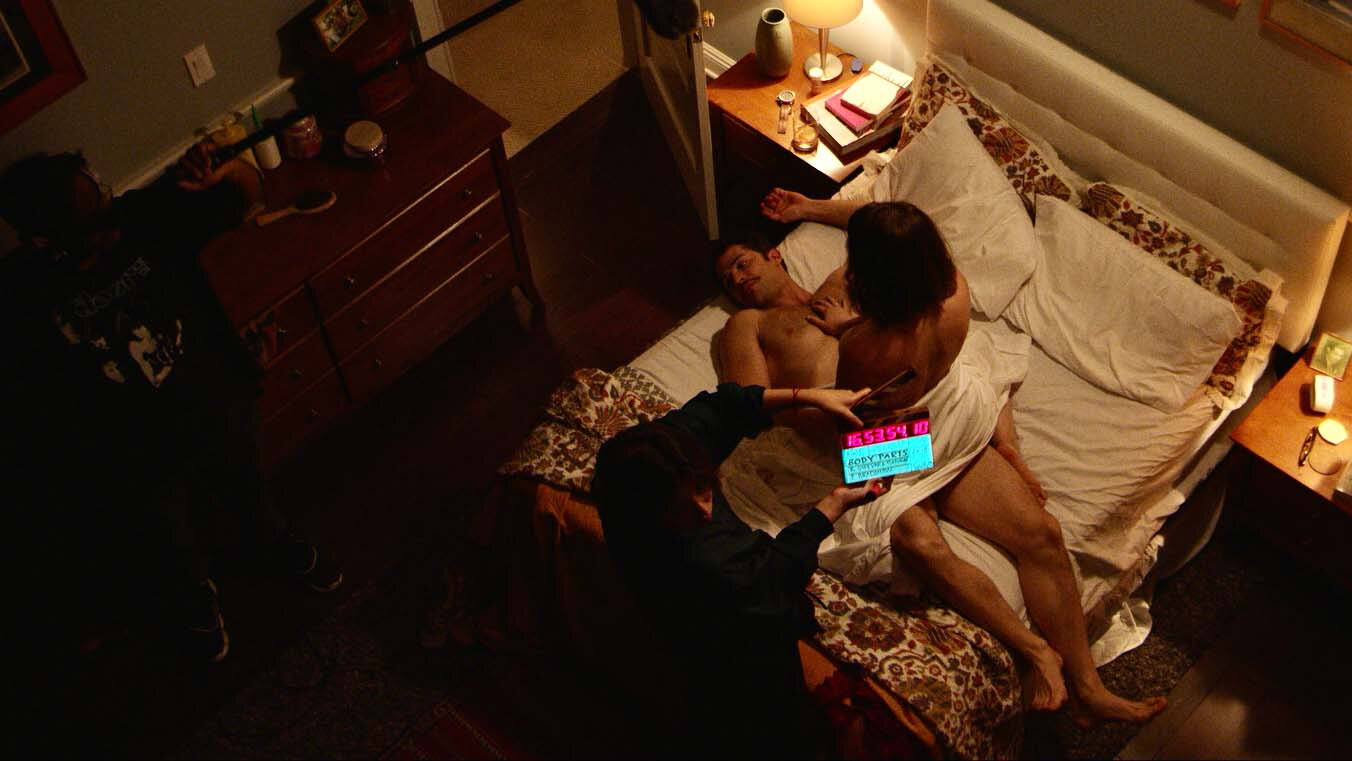The mechanics and politics of the filmed sex scene are put under a microscope in Kristy Guevara-Flanagan’s documentary Body Parts. A useful primer for thinking about the ways Hollywood has encoded heteronormative ideas about coitus and acted as a type of collective sex ed, Body Parts is ultimately a little too expansive. Bouncing between the Hays Code, Hattie McDaniel and the “Mamie” stereotype, #MeToo, the Harvey Weinstein and James Franco scandals, intimacy coordinators, nudity riders, and about ten other subtopics, Guevara-Flanagan’s thesis about incremental changes to the industry is ultimately diffused. While compelling in its individual, discrete sections, it fails to find a compelling throughline that would tie everything together.
Featuring a roster of talking heads, Body Parts mainly prioritizes TV creators including Joey Solloway (Transparent), David Simon (The Deuce), and Tanya Saracho (Vida), as well as actors DeWanda Wise, Rosanna Arquette, Jane Fonda, Rose McGowan, and Alexandra Billings. Each speaks to their own personal experience filming sex scenes, as well as discussions about changes to the industry at large.
Not surprisingly, we are given an overview of the role of the intimacy coordinator, a position that frames and advocates for the actors in any type of intimate scene and came about on The Deuce at the behest of actress Emily Meade. Body Parts is at its most interesting when honed in on the ways sex gets broken down by lawyers, directors, actors, and coordinators. This is particularly true when we see Amanda Blumenthal, a coordinator and founder of the Intimacy Professionals Association, explain the types of sex scenes with trainees, using Outlander as an example, or even when a costume designer breaks down the purpose and practice behind a merkin.
The same goes for a pretty credible overview of nudity riders and how sex scenes are translated to a type of legal jargon about what can and cannot be shown. Yet for each of these technical breakdowns, Guevara-Flanagan also attempts to compress the entire Weinstein scandal into a few minutes of screentime or, odder still, James Franco’s abuse allegations. This is all the more bizarre when Simon is presented as an authority speaking about the need for industry-wide changes but also kept Franco employed on The Deuce; a point that, at least, deserves some pushback.
By constantly zooming in and out of various issues related to sex scenes, Body Parts begins fraying, if only because each of these topics probably deserves its own film. Discussions about the type of “beauty work” that VFX artists work on are compelling in their own right, but also seem misplaced against, say, quick overviews of Dr. Christine Blasey Ford and Anita Hill.
Juxtaposed against these talking heads is a series of scenes from a wide range of film and television. Of course, we are shown empowering sex scenes from Transparent or Vida, in addition to overviews of Fonda and McGowan’s work. But sometimes the scenes don’t match the content in frustrating ways.
Kate Winslet’s nude scene in Titanic is shown while someone discusses impossible beauty standards––an odd choice when Winslet has been outspoken about how the media portrayed her weight in that film. And while multiple interviewees talk about systemic changes to writers’ rooms and directors’ chairs to be more inclusive, we are given scenes from Euphoria. Whatever could be said for that show, I don’t think anyone is holding it up as an example of shifting power structures in Hollywood.
Body Parts has too many ideas running through it to cohere around an effective thesis statement, framing the entire narrative as one of linear progress toward inclusion. It unravels in too many different directions, cramming in first-person testimony, historical overview, and social context into a too-short runtime. Yet in its individual moments, Body Parts presents something novel: a behind-the-scenes look at the mechanics of a sex scene.
Body Parts opens in theaters and on VOD on February 3.

